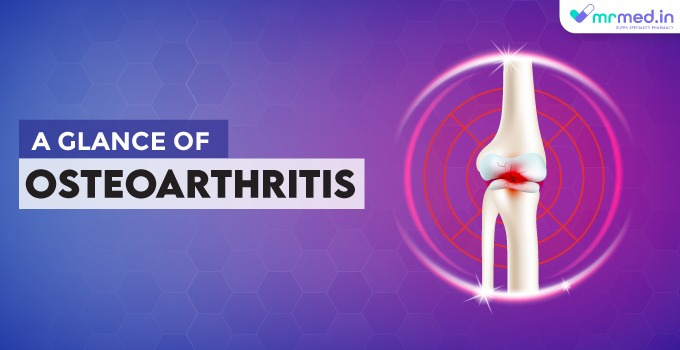Introduction
Osteoarthritis occurs due to overuse or wear and tear of the joints over time. The ends of the bones within joints are lined with cartilage (layer of tissue) which cushions them and ease with frictionless motion. Wear and tear, joint injury or infection can damage the cartilage leading to pain and restricted movement. Lifestyle factors such as obesity, joint injuries, and repetitive stress on the joints can also increase the risk of developing OA. It commonly affects the hips, knee, hands and spine.
Symptoms Of Osteoarthritis
Symptoms of this disease condition can vary depending on the joint affected, but they may include pain, stiffness, tenderness, and swelling. These symptoms tend to develop slowly and gradually worsen over time. In severe cases, the joint may become deformed, and mobility may be significantly impaired. If you have been enduring osteoarthritis (OA) or developed symptoms of this disease, please consult an orthopedist immediately for medical support because this condition needs early onset treatment to prevent bone deformations.
Diagnosis Of Osteoarthritis
The doctor can clinically confirm osteoarthritis after obtaining the X-ray and MRI reports to identify tear of joints or pain in bones. But initially, the doctor may perform a physical examination to analyse the joint pain. Osteoarthritis can be prevented by maintaining a healthy weight, staying active, and doing exercise is particularly important, as it can help to strengthen the muscles around the joint, improve flexibility, and reduce pain.
Treatment Options For OA
Medications such as pain relievers, nonsteroidal anti-inflammatory drugs (NSAIDS), or corticosteroid injections help to reduce inflammation and pain. Other treatments like joint replacement surgery significantly improve mobility and decrease the pain in affected joints. It is also necessary to manage medical conditions, such as diabetes or high blood pressure should be checked properly.
Synvisc one injection is used to treat joint pain caused by osteoarthritis. It contains the active ingredient Hylan polymer A&B G-F 20, which is the combination of two polymers called hyaluronan and hylan. Hyaluronan is a natural substance found in the body that helps to lubricate and cushion the joints. Hylan is a chemically modified form of hyaluronan that helps to prolong the effects of the injection. Synvisc one injections are usually given once a week for three to five weeks, depending on the severity of the condition. When Hylan polymer A&B G-F 20 is injected into the joint, it helps to reduce pain and improve mobility by restoring the cushioning and lubrication that is lost in osteoarthritis. Mild pain or swelling at the injection site are the common side effects of the Synvisc one injection.




